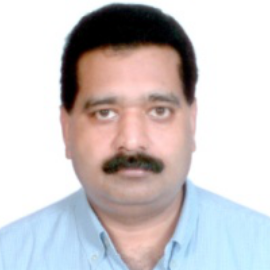
Ajay K Sharma
Work place: Department of Computer Science and Engineering, National Institute of Technology, Jalandhar, Punjab, India
E-mail: sharmaajayk@nitj.ac.in
Website:
Research Interests: Computer Networks, Network Architecture, Network Security
Biography
Ajay K Sharma: received his BE in Electronics and Electrical Communication Engineering from Punjab University Chandigarh, India in 1986, MS in Electronics and Control from Birla Institute of Technology (BITS), Pilani in the year 1994 and PhD in Electronics Communication and Computer Engineering in the year 1999. He is presently working as Professor in Computer Science & Engineering in National Institute of Technology, Jalandhar. His major areas of interest are broadband optical wireless communication systems and networks, dispersion compensation, fiber nonlinearities, optical soliton transmission, WDM systems and networks, Radio-over-Fiber (RoF) and wireless sensor networks and computer communication. He has published 215 research papers in International/National Journals /Conferences and 12 books. He has supervised 11 Ph.D. and 28 M.Tech. theses. He has completed three R&D projects funded by Government of India. He is associated to implement the World Bank project of 209 Million for Technical Education Quality Improvement programme of the institute. He is technical reviewer of reputed international journals. He was a member of technical Committee on Telecom under International Association of Science and Technology Development (IASTD) Canada for the term 2004-2007 and he is Life member of Indian Society for Technical Education (I.S.T.E.), New Delhi.
Author Articles
Distributed Algorithms for Maximizing Lifetime of WSNs with Heterogeneity and Adjustable Sensing Range for Different Deployment Strategies
By Samayveer Singh Ajay K Sharma
DOI: https://doi.org/10.5815/ijitcs.2013.08.10, Pub. Date: 8 Jul. 2013
Focus of this paper is on energy heterogeneity and distributed algorithms for scheduling and adjustable range. The problem of lifetime enhancement of wireless sensor networks is dealt with the adjustment of transmission or sensing range of the sensor nodes and implementation of heterogeneous energy model. In this work, we deploy the sensor nodes in 2-D using triangular, square, and hexagonal tiles. The initial energies of the sensors and their positions along with the positions of targets are known. For this environment, we investigate the maximum achievable lifetime using heterogeneous deterministic energy efficient protocol with adjustable sensing range (HADEEPS) and heterogeneous load balancing protocol with adjustable sensing range (HALBPS). We observe that deploying the sensors in triangular tiles gives better lifetime.
[...] Read more.Other Articles
Subscribe to receive issue release notifications and newsletters from MECS Press journals